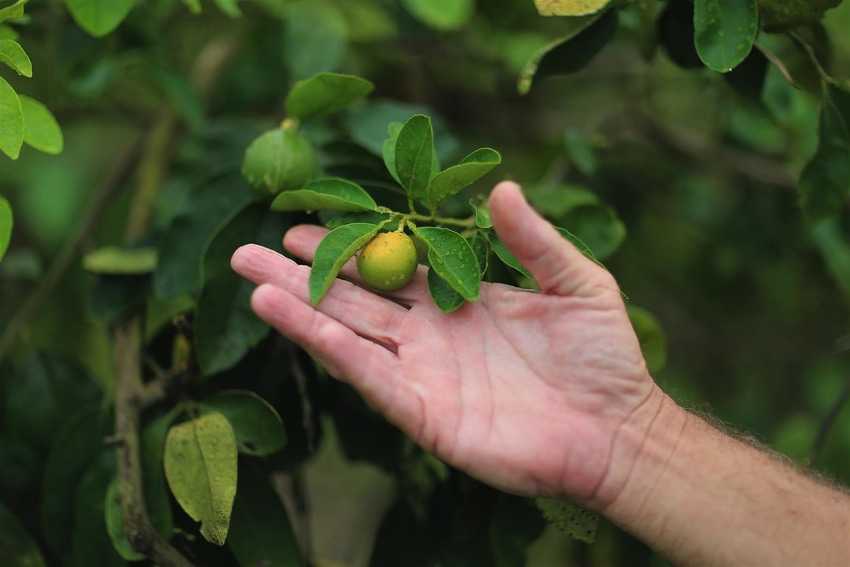February 4, 2016

California officials continue to find infected citrus trees in San Gabriel, Calif. as they sweep the area for the deadly disease Huanglongbing (HLB), also known as citrus greening.
Two additional trees – an orange and a kumquat – recently tested positive for the bacterial disease. State officials are removing those trees in an attempt to slow the spread of the disease.
The find brings the total number of diseased trees found since last summer to 12. All have been in non-commercial settings.
Because the trees are close to the epicenter of the current HLB quarantine, the California Department of Food and Agriculture does not need to expand the quarantine, which covers 180 square miles.
Citrus trees in San Gabriel had already been treated for the Asian citrus psyllid (ACP) within the last few weeks as part of CDFA’s routine HLB response. ACP populations are closely monitored in areas where HLB has been detected and treatments occur if there is a noted increase in population size.
Since trees have been recently protected, no additional treatments will take place at this time. Instead, CDFA will focus on sampling extensively in the area. Much of the area has already been sampled and CDFA’s lab has identified all samples from San Gabriel as high priority.
The Citrus Pest & Disease Prevention Program is working with the Los Angeles County Agricultural Commissioner’s office and CDFA to develop a multi-lingual informational flier to notify residents of the significance of these finds and potential implications to other citrus trees in the area.
CDFA staff will distribute this information as they go door-to-door sampling and surveying.
In the meantime, the citrus industry is encouraged to keep a critical eye on all plant material moving into or out of commercial groves.
Remove all leaves and stems, shake out picking bags, inspect harvesting equipment and educate field workers. Participate in area-wide treatments.
About the Author(s)
You May Also Like






